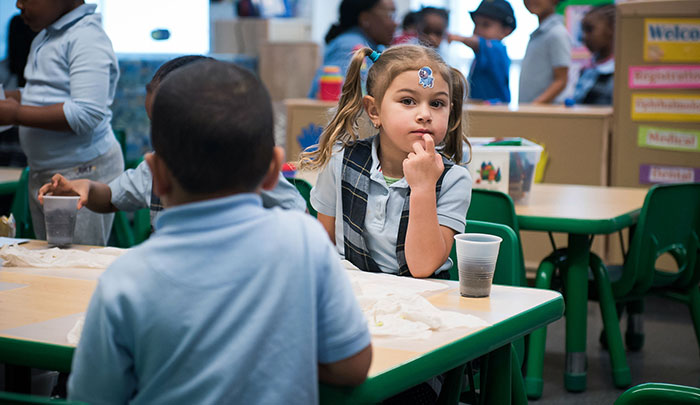Photo Courtesy of Ed Reed/Mayoral Photography Office
“Schools should be sanctuaries where every child feels safe and supported, but all too often, when students need help, they don’t receive the care they need,” Comptroller Stringer said.
By Forum Staff
Bullying among city students is on the rise, while mental health and social services in public schools are lacking, according to an audit and separate report released on Monday by City Comptroller Scott Stringer.
The report, “Safe and Supportive Schools: A Plan to Improve School Climate and Safety in NYC,” presents a review of current data related to school safety – including a jump in bullying, and an “alarming” level of arrests and handcuffing of students, Stringer noted – and from that data draws a series of holistic recommendations on how to make City schools healthier and more secure.
Separately, a new audit revealed operational failures in how the City reports violent incidents in schools to the State and evidence of underreporting of these incidents in the audit sample.
“Safe and Supportive Schools…” uncovered the following:
• In 2017, 82 percent of students reported that their peers harass, bully, or intimidate others in their schools, up from 65 percent in 2012, based on student responses to the most recent NYC School Survey.
• Similarly, roughly one in five students say they personally do not feel safe in or around their school.
• During the 2016-2017 school year, students were handcuffed in over 1,800 incidents – including 120 cases involving children age 12 and under. While recently released data from the first quarter indicates improvement, Black and Latino students continue to be disproportionately impacted, Stringer noted.
• In the first half of the 2017-2018 school year, school suspensions increased by 20 percent following several years of decline.
The audit found the City Department of Education failed to record 21 percent of the sampled “violent or disruptive” incidents in school year 2015-2016 in its incident database, based on a sample of 10 middle and high schools. As a result, these incidents were not considered for inclusion in mandatory reports to the State, the comptroller said. The audit also found that DOE did not consistently track the necessary disciplinary and referral action information needed to properly assess whether certain incidents should be reported to the State.
Additionally, Stringer’s report found:
• There is only one guidance counselor per 375 students and only one social worker per 612 students in our public school system.
• In the 2016-2017 school year, 725 schools serving students across all grades – 45 percent of all schools – had no social worker at all.
• According to student surveys, 17 percent of students feel there is no adult in their school in whom they can confide.
“Our young people are yearning for mental health support – we heard it straight from them, and it’s time we address the problem head on,” Stringer said. “Schools should be sanctuaries where every child feels safe and supported, but all too often, when students need help, they don’t receive the care they need. We need to improve our school climates with a significant, system-wide investment in order to unleash the potential of every child in this city.”
“Safe and Supportive Schools…” lays out a series of recommendations for DOE and the City, including:
• Expand small social-emotional learning advisories in all schools, which are known to be a highly effective way to support students’ social-emotional learning and to ensure that each student has at least one adult in school they can turn to in times of need.
• Expand the ranks of in-school social workers and other mental health professionals, who are best equipped to respond to emotional or behavioral crises.
• Clarify the role of School Safety Agents and update the Memorandum of Understanding that governs DOE’s relationship with NYPD to clearly outline appropriate interventions for specific scenarios involving student misconduct.
• Fund a Comprehensive Mental Health support continuum to provide direct service and targeted interventions for the highest-need students and schools, including hospital-based mental health partnerships, mobile response teams, and school-based mental health care.
• Establish and oversee system-wide trauma-informed schools to tackle problems consistent with the chronic stresses of poverty.

